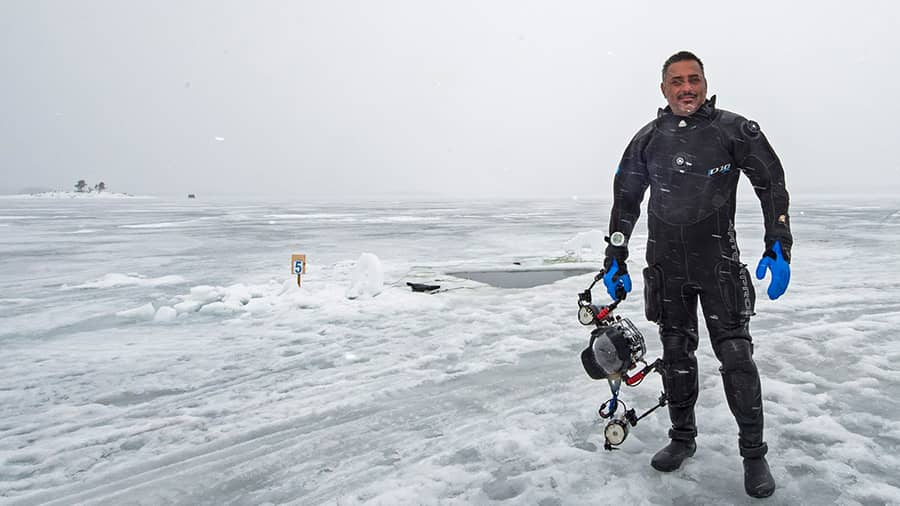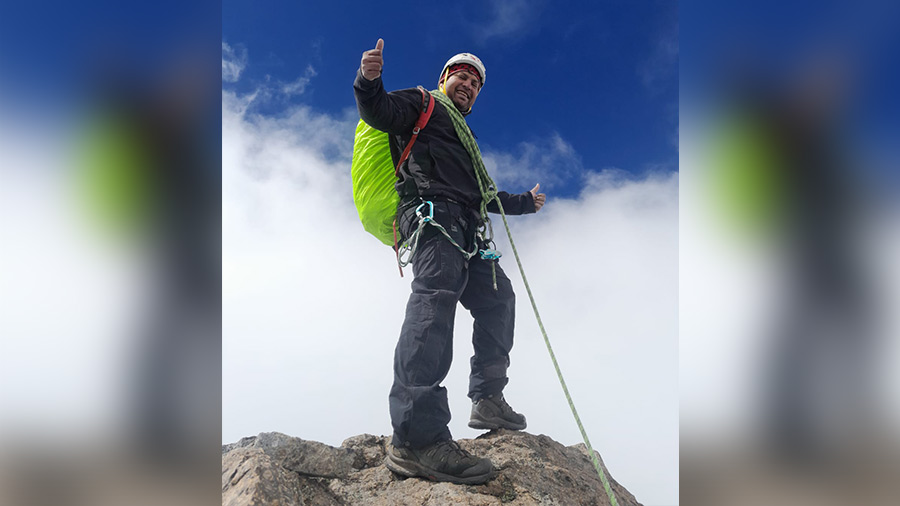“It’s over, it’s gone,” muttered Nilavishek Mukherjee to himself on what was supposed to be the most important day of his mountaineering career. On January 18, the summit day for Nilavishek and seven other climbers from across the world at Antarctica’s Mount Sidley, the weather gods had finally smiled. The sky was clear, the winds were not “impossible” and the temperature hovered around minus 30 degrees Celsius (manageable by local standards). But Nilavishek was “knackered”. Eight hours away from making history, he felt as if his body was starting to give up. “If you continue this way, the only way for you is down to the base camp,” warned his guide. Nilavishek listened, ate some chocolate and dug deep into his reservoirs of resilience, recalling his grandfather’s words: “Kortei hobe, egiye jetei hobe (you have to do it, you have to move forward).”
“Relief” is how Nilavishek describes his feelings on finally scaling Sidley, completing the ambitious and arduous quest of climbing the highest volcanoes in the seven continents, officially known as the Volcanic Seven Summits. In doing so at 33, Nilavishek also became the youngest Indian to achieve the feat, breaking friend and mentor Satyrarup Siddhanta’s record of 35 years, secured in 2019. “It’s amazing to see Nilavishek enter the coveted club (less than 30 climbers globally have aced the Volcanic Seven Summits). That he’s just the second Indian to do it shows how few Indians venture outside the Himalayas and tread the path less taken. Doing what Nilavishek has done takes a lot of dedication and sacrifice. I hope his achievement inspires a lot of young people to take up similar challenges,” feels Siddhanta.
‘I was struggling throughout the summit day probably because I hadn’t eaten properly’
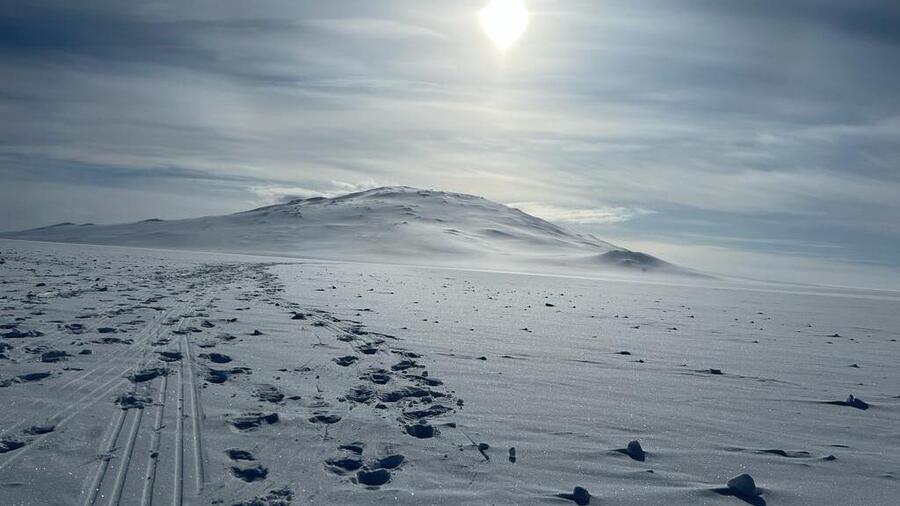
Nilavishek describes Sidley as the most expensive as well as the most obscure of all the seven highest volcanic summits Courtesy Nilavishek Mukherjee
For Nilavishek, Sidley (at an elevation of 4,285 m) should ideally have been conquered three years ago. Having fulfilled his “childhood fantasy” of climbing Mount Kilimanjaro (5,895 m) in Tanzania in 2017, Nilavishek summitted Chile’s Ojos del Salado (6,893 m), the highest of the volcanic mountains, a year later. By 2019, he had completed three more — Mount Elbrus (5,642 m) in Russia, Pico de Orizaba (5,636 m) in Mexico and Damavand (5,610 m) in Iran. The outbreak of Covid-19 meant that mountains were closed for the best part of two years, delaying Nilavishek’s mission to finish with all seven by the time he turned 30. Last August, when Papua New Guinea’s Mount Giluwe (4,368 m) was reopened, Nilavishek quickly surmounted it, before funding issues meant that he had to wait till January to tick off Sidley from his list.
“Sidley is quite expensive and it’s also the most obscure of all the expeditions. You only get three weather models and you never know what the wind situation is going to be unless you get to the spot. They don’t take you to the base camp unless you’re sure of landing, since any rescue mission can take upwards of three hours. When we went there, we also encountered snow, which made pulling the sledge even harder,” explains Nilavishek. Having spent three to four days in the base camp in the middle of January, Nilavishek and his fellow climbers had initially identified January 17 as D-Day. But that had to be abandoned because of strong winds. A day later, at around 5pm local time in Antarctica (around 9.30am in India), Nilavishek wrote his name into Indian mountaineering annals. “I was struggling throughout the summit day probably because I hadn’t eaten properly,” recollects Nilavishek, before narrating in painstaking detail how his hands were at risk of freezing every time he opened his gloves to put some food in his mouth. “The key is to get your hands inside your jacket as quickly as possible and keep walking to feel warmer,” he says. One of his fellow climbers got severe frostbite on one of her toes even though she had double boots for protection. Her entire toe had turned black. “A lot of people think that mountaineering is fun and romantic. But it’s not. There are some real hardships to deal with. Just imagine urinating in a bottle, putting it inside your sleeping bag to unfreeze, emptying it and repeating the process just because you can’t step out of your tent at night to relieve yourself,” sniggers Nilavishek.
‘Going to Kilimanjaro was a direct outcome of reading ‘Chander Pahar’’
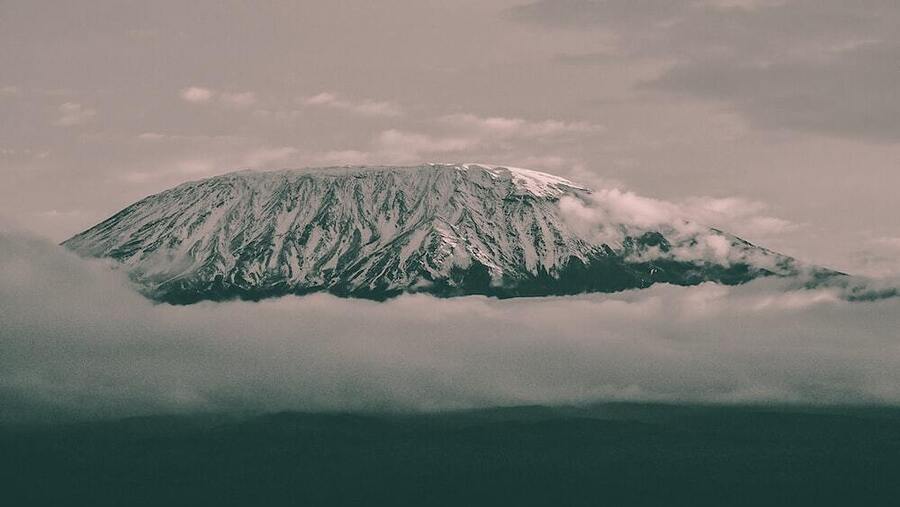
Nilavishek summited Mount Kilimanjaro on a full moon night in 2017, inspired by a similar journey made by the chief protagonist in ‘Chander Pahar’ Unsplash
Born and brought up in Purulia, Nilavishek’s love for mountaineering was generated by frequent trips to the Ayodhya Hills in his formative years. “I got to see Purulia in its rawest form. Nowadays things are more organised with the district becoming a travel hotspot,” says Nilavishek, who was also inspired to trek, climb and seek adventure by Bibhutibhushan Bandopadhyay’s Chander Pahar. “In many ways, going to Kilimanjaro was a direct outcome of reading Chander Pahar. And, in keeping with the novel, I wanted to summit Kili on a full moon night. When I did so, it felt magical. The glacier was glistening, as if lined with diamonds,” exclaims Nilavishek.
After completing his education as an engineer, Nilavishek briefly worked in Bengaluru (where he had experienced every possible adventure trek inside a few months), before a stint in Kolkata, which he felt “made me complacent and unwilling to do as much as I should have”. Having narrowly missed out on an MBA, Nilavishek applied to and got hired by Swiss Bank, which saw him move to Poland. Presently, he is based out of Cologne in Germany, where he works for Toyota Bank.
‘Want to become the first Indian to fly in and out of the North and South Poles as a private pilot’
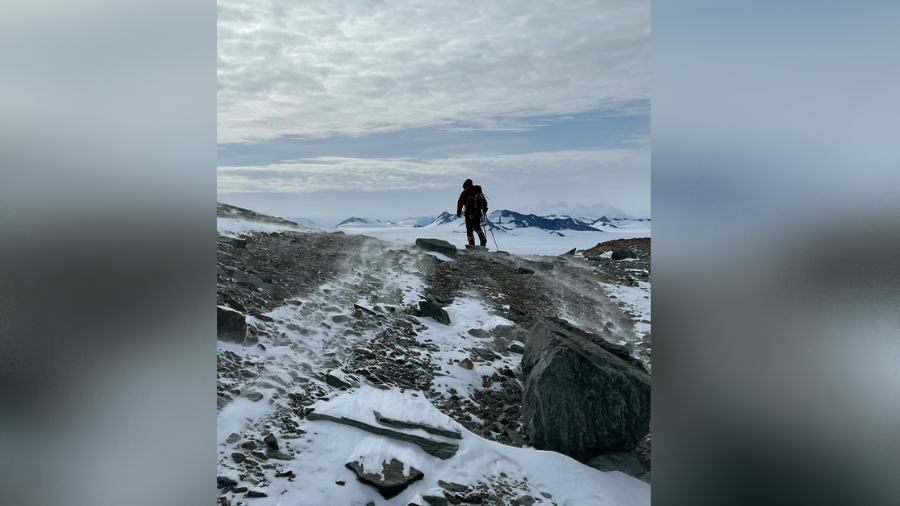
Nilavishek feels that mountaineers and climbers need far more support from the government and the media in India Courtesy Nilavishek Mukherjee
Now that the accomplishment of Volcanic Seven Summits has been unlocked, what lies next? “I don’t think I’m climbing any proper mountains for at least one year,” chuckles Nilavishek, though he is quick to point out the adventure plans that he wishes to realise soon. “First, I want to visit the world’s largest natural cave, the Son Doong cave, in Laos. I also want to become the first Indian (to the best of his and the internet’s knowledge) to fly in and out of the North and South Poles as a private pilot.”
While Nilavishek is grateful for the support he has received from the mountaineering community, he is disappointed by the sheer neglect faced by adventure athletes in India, be it from the government or the media. “A lot more needs to be done to help climbers and mountaineers back home. Adventure sports are expensive, and without adequate funding or sponsors, many will miss out on the opportunity. Even for someone like myself, who’s lucky enough to be able to self-fund most of his expeditions, acknowledgement and appreciation only come when I achieve something. I was only asked for an interview after I finished with Sidley. Society shouldn’t just recognise achievers, but all those who are trying to contribute in their own ways. That’s how a functional ecosystem can be built and harnessed,” says Nilavishek.
At the same time, Nilavishek has a word of caution for those aspiring to follow in his footsteps: “Don’t trifle with your life and do your research before embarking on a journey. Mountains aren’t about Instagram hashtags and defying weather. It’s about putting together pieces of a puzzle, about discovery and reflection. While I’d encourage everyone to try and experience mountaineering, I’d also urge them to remember that nature can be as cruel as it can be rewarding.”

